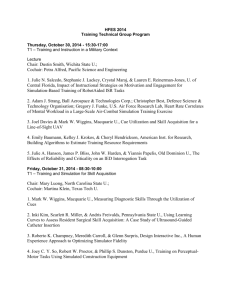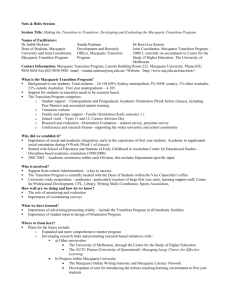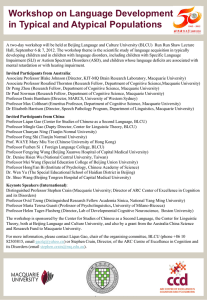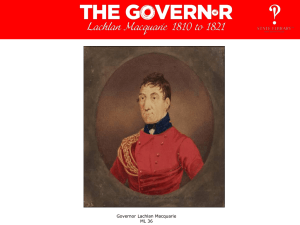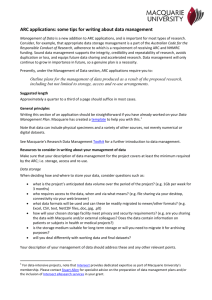Lake Macquarie City Council Regional Sustainability Planning Project
advertisement
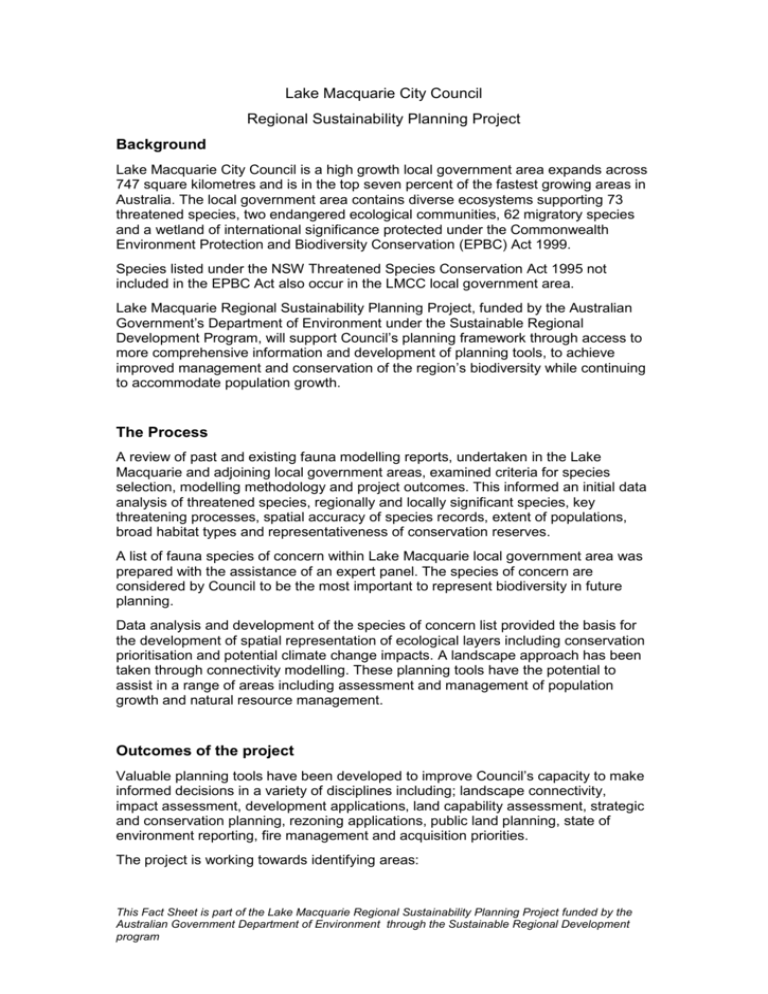
Lake Macquarie City Council Regional Sustainability Planning Project Background Lake Macquarie City Council is a high growth local government area expands across 747 square kilometres and is in the top seven percent of the fastest growing areas in Australia. The local government area contains diverse ecosystems supporting 73 threatened species, two endangered ecological communities, 62 migratory species and a wetland of international significance protected under the Commonwealth Environment Protection and Biodiversity Conservation (EPBC) Act 1999. Species listed under the NSW Threatened Species Conservation Act 1995 not included in the EPBC Act also occur in the LMCC local government area. Lake Macquarie Regional Sustainability Planning Project, funded by the Australian Government’s Department of Environment under the Sustainable Regional Development Program, will support Council’s planning framework through access to more comprehensive information and development of planning tools, to achieve improved management and conservation of the region’s biodiversity while continuing to accommodate population growth. The Process A review of past and existing fauna modelling reports, undertaken in the Lake Macquarie and adjoining local government areas, examined criteria for species selection, modelling methodology and project outcomes. This informed an initial data analysis of threatened species, regionally and locally significant species, key threatening processes, spatial accuracy of species records, extent of populations, broad habitat types and representativeness of conservation reserves. A list of fauna species of concern within Lake Macquarie local government area was prepared with the assistance of an expert panel. The species of concern are considered by Council to be the most important to represent biodiversity in future planning. Data analysis and development of the species of concern list provided the basis for the development of spatial representation of ecological layers including conservation prioritisation and potential climate change impacts. A landscape approach has been taken through connectivity modelling. These planning tools have the potential to assist in a range of areas including assessment and management of population growth and natural resource management. Outcomes of the project Valuable planning tools have been developed to improve Council’s capacity to make informed decisions in a variety of disciplines including; landscape connectivity, impact assessment, development applications, land capability assessment, strategic and conservation planning, rezoning applications, public land planning, state of environment reporting, fire management and acquisition priorities. The project is working towards identifying areas: This Fact Sheet is part of the Lake Macquarie Regional Sustainability Planning Project funded by the Australian Government Department of Environment through the Sustainable Regional Development program with high ecological and connectivity (corridor) values identified for potential retention and management; that require certain criteria to be satisfied before any decision can be made on retention or development; and with low or no ecological or connectivity values and may be suitable for development (subject to confirmation through field surveys and consideration of other relevant issues). Where to from here…… Specialist reports and mapping developed as part of the project will provide Council with information previously incomplete or absent. Further studies and reports are currently in progress on reptiles, amphibians and the Giant Dragonfly. In addition, further work is planned for threatened flora species that occur within the local government area. Future work will include species listed under State and National legislation. The information, planning tools and extensive information developed through the project will, over time, be integrated into Council’s planning framework and will inform future projects including the Lake Macquarie 2050 Landuse Strategy. Research, knowledge development and information gathering will be ongoing to continually improve, add and refine planning tools created through this project. Opportunities to work with State and Regional organisations and neighbouring councils would be welcomed to improve information sharing and exchange and would contribute to a seamless approach to sustainable planning at a regional level. This Fact Sheet is part of the Lake Macquarie Regional Sustainability Planning Project funded by the Australian Government Department of Environment through the Sustainable Regional Development program
